Making these five-minute poached eggs is easy, and you don't need a special poacher. The result, creamy and delicate, is well worth the slight effort.
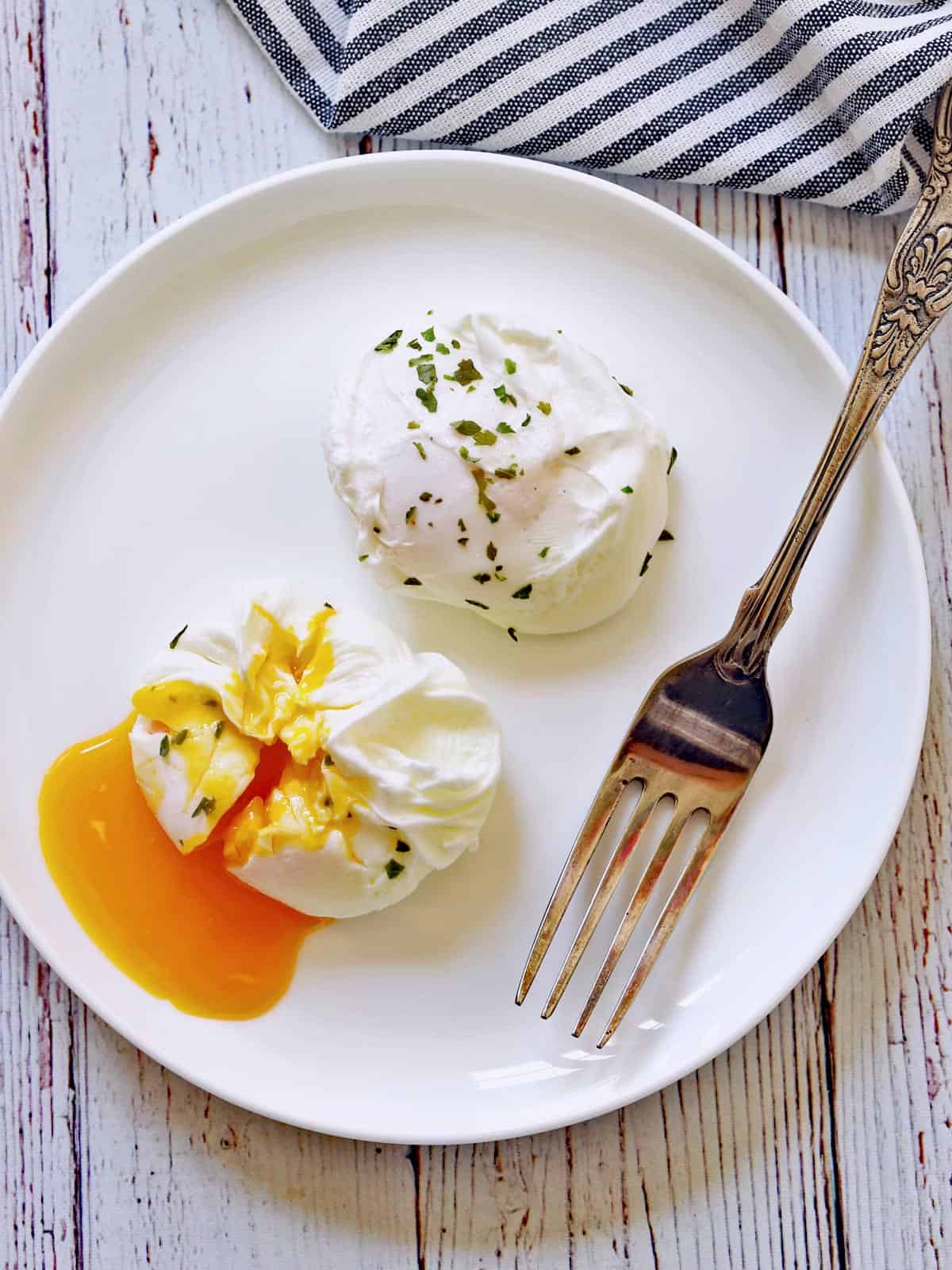
Crispy fried eggs, fluffy scrambled eggs, and soft-boiled eggs are so good. But poaching is a gentle cooking method that results in an especially creamy texture and a delicate flavor. I love eggs in any way you can make them. But as someone who loves runny yolks, poached eggs are my favorite way to enjoy this delicious and versatile food.
Ingredients
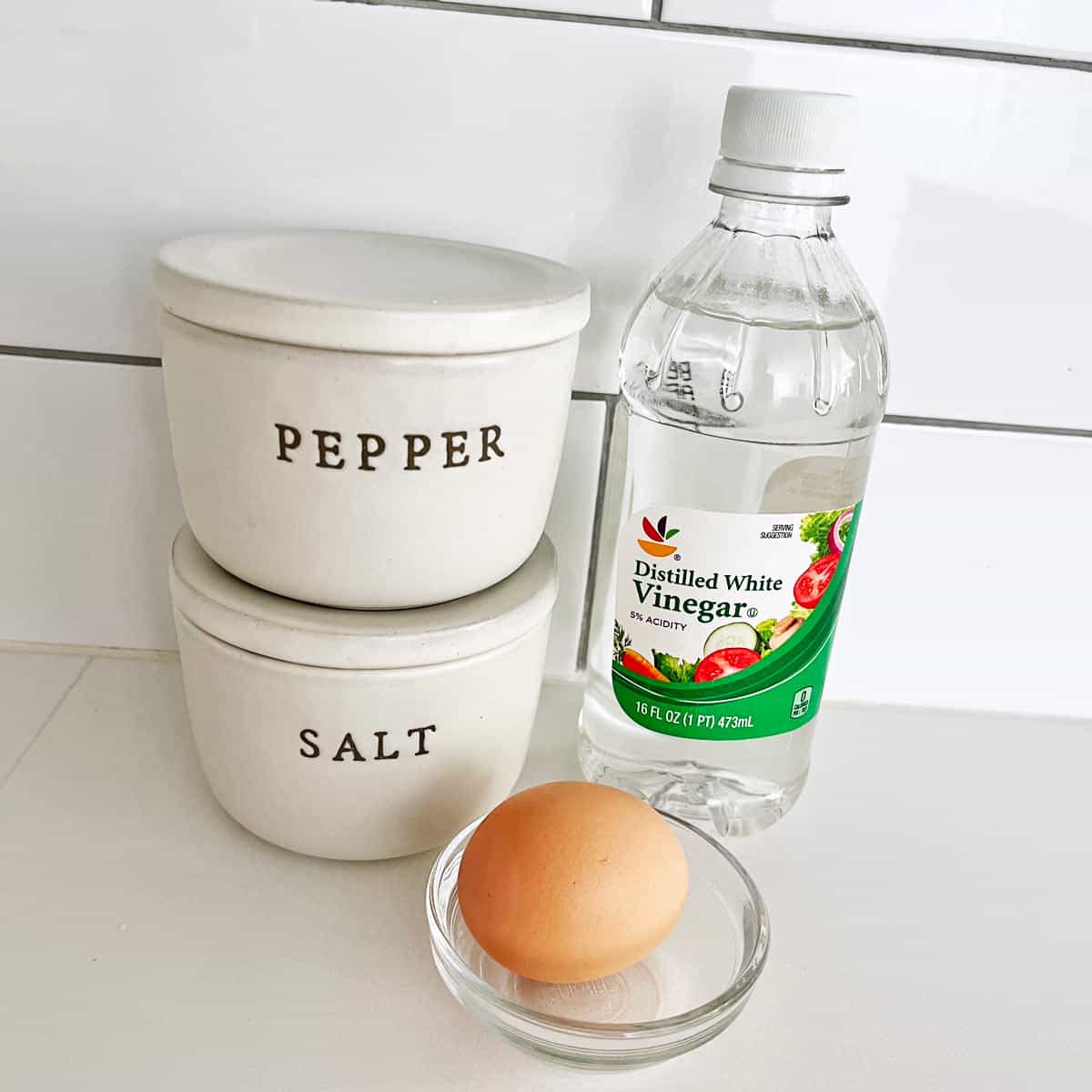
See the recipe card for exact measurements. Here are my comments on the ingredients.
- Vinegar for the water: Any vinegar will work. I use distilled white vinegar. The vinegar helps the egg white congeal - that's its only purpose.
- Egg: I use large eggs in most of my recipes, including this one.
- Salt and pepper: Used to season the egg.
Instructions (Without a Poacher)
The detailed instructions and step-by-step photos are included in the recipe card. Here's a quick overview.
Bring a small pot filled with water to a gentle boil. Break an egg into a small bowl. Add vinegar to the boiling water. Vigorously whisk the water, then slide the egg in. You can gently push the egg white closer to the yolk if it spreads too much.
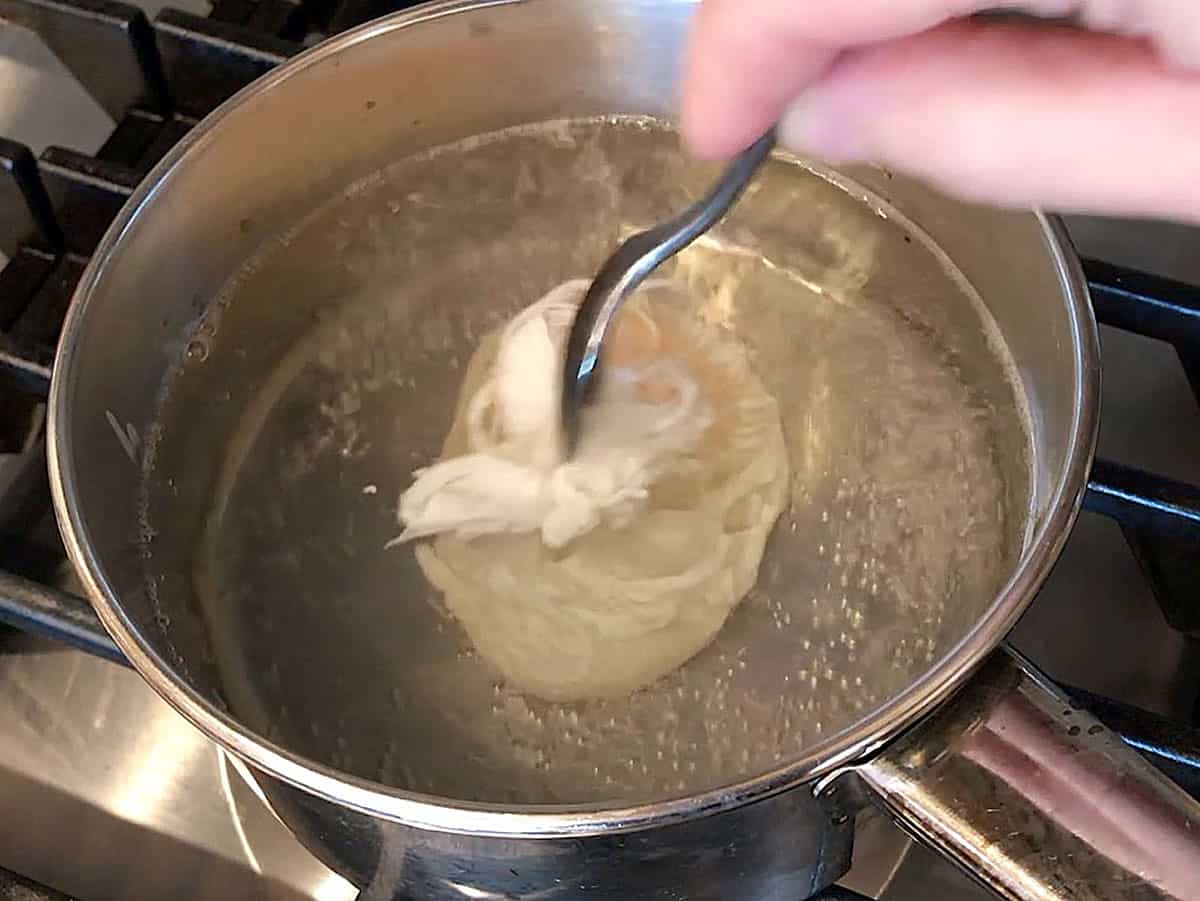
Cover, turn the heat off, and wait for five minutes. Lift the egg out of the water with a slotted spoon and place it on a paper towel to drain.
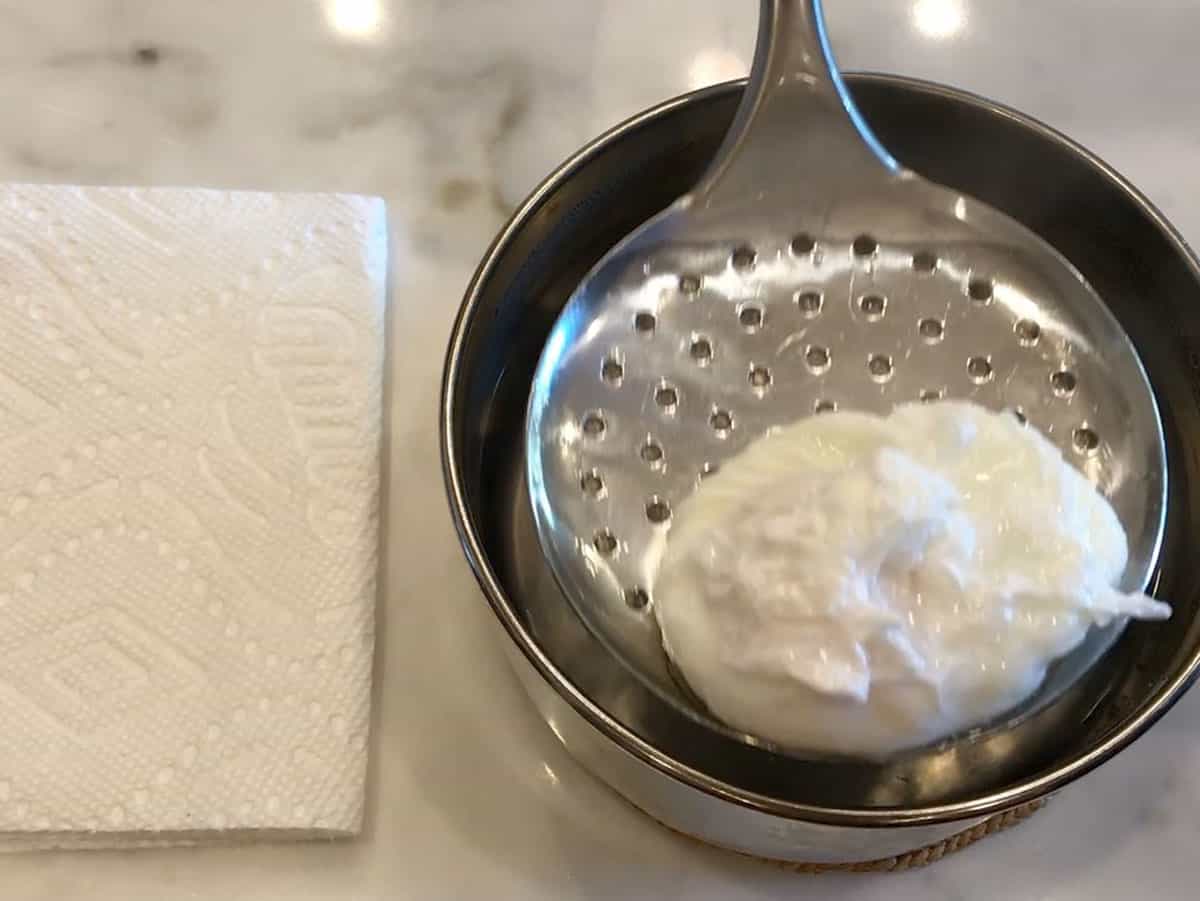
Season with salt and pepper, and serve.

For the first time in my life I was able to make proper poached eggs! Thank you so much.
Haley
Read more comments
Microwave Egg Poacher
I own a microwave egg poacher, but I rarely use it, because it produces overcooked yolks. To use it, you crack the eggs into the cavities, cover them, and microwave for 40-60 seconds (assuming your microwave is 1200 watts).

The problem: 40 seconds produced undercooked eggs, while 50 seconds produced overcooked eggs with nearly firm yolks, as shown in the photo below.
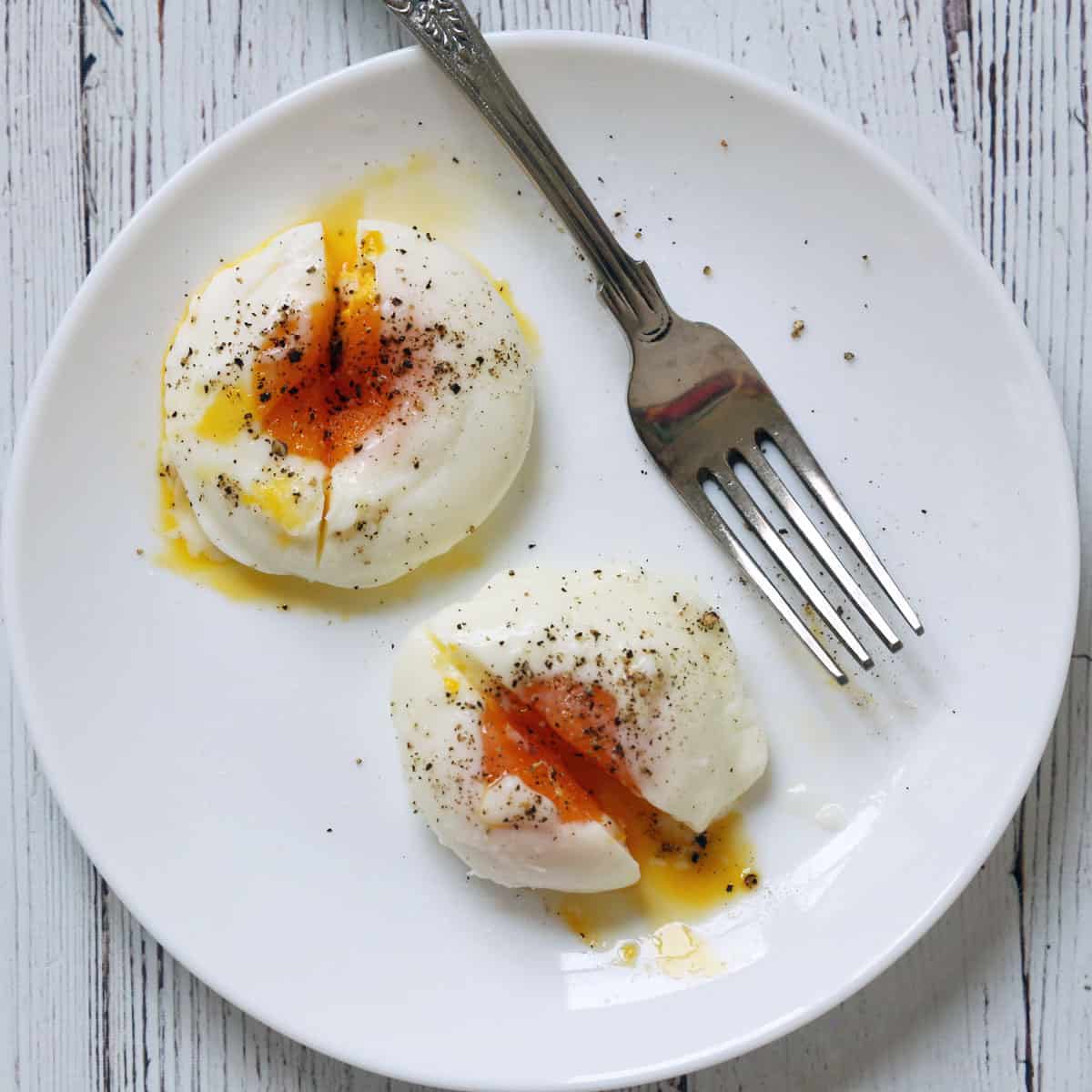
Stovetop Egg Poacher
A stovetop egg poacher works better than a microwave one, although you will still need to experiment with how long to poach the eggs. Unlike my method of poaching them in hot water after turning the heat off, here, you crack them into the cavities, cover, and poach them in gently boiling water.

They only need to be poached for three minutes for runny yolks, or four minutes for jammy yolks, as shown in the image below.

My Daughter's Feedback
My twenty-something daughter texted me a few days ago, sharing her positive experience making these eggs:

Here is the beautiful photo she attached:
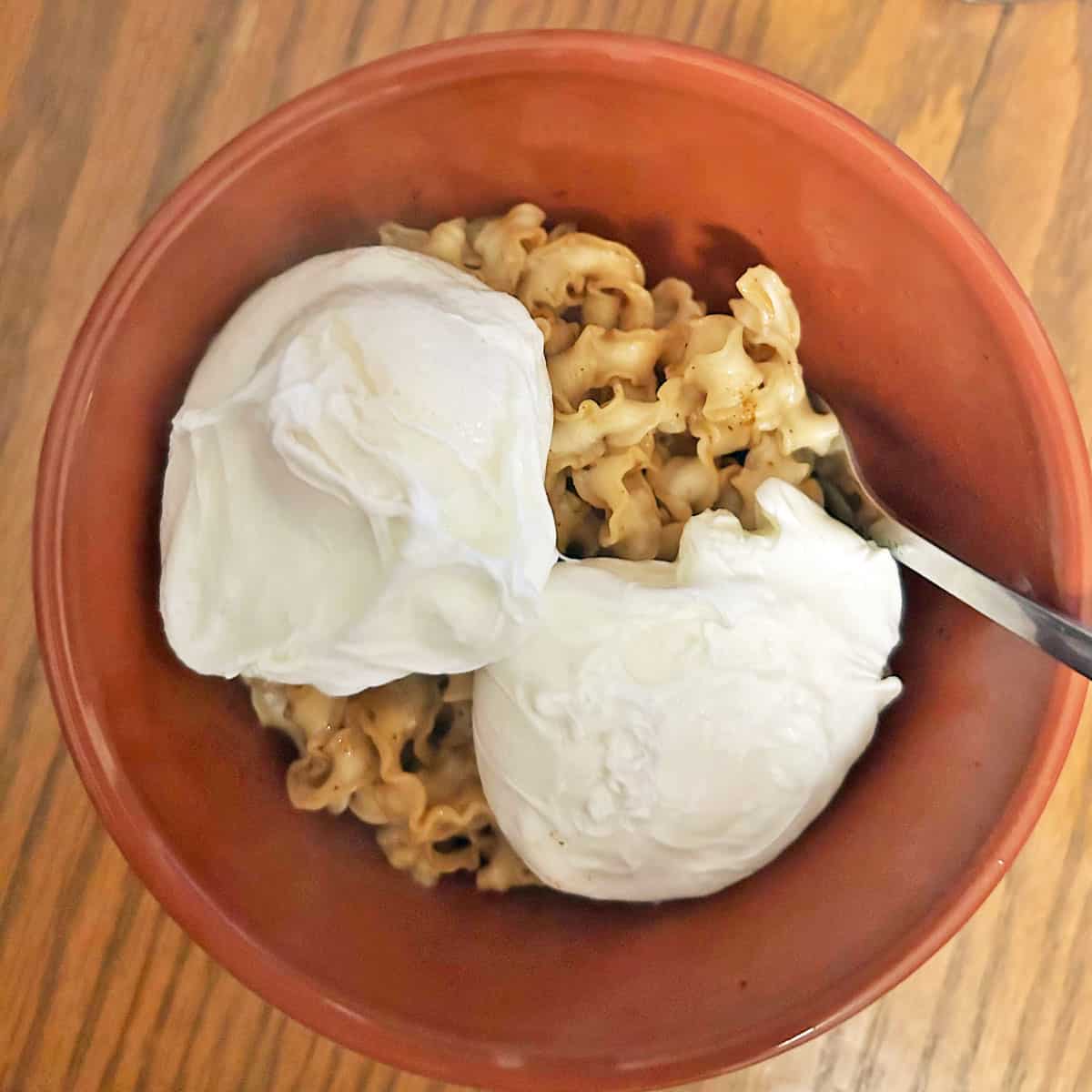
Recipe Tips
- Adding vinegar to the water helps the egg whites congeal. The faster the egg whites cook, the less risk the egg will disperse in the water, leaving you with an unappetizing and messy boiled scramble. You add just a small amount of vinegar, so you don't actually taste it. Regardless, using mild-tasting vinegar, such as rice or champagne vinegar, is a good idea. Having said that, I've used plain white vinegar plenty of times, and it was just fine.
- While you can find tips online for storing and reheating poached eggs, I don't like storing them. I only make as many as my family will eat right away.
Serving Suggestions
I usually serve poached eggs on a toasted keto English muffin (as shown in the photo below) or toasted and buttered almond flour bread. When you serve the eggs on any type of bread, drain them for a few seconds on a paper towel to prevent soggy bread.
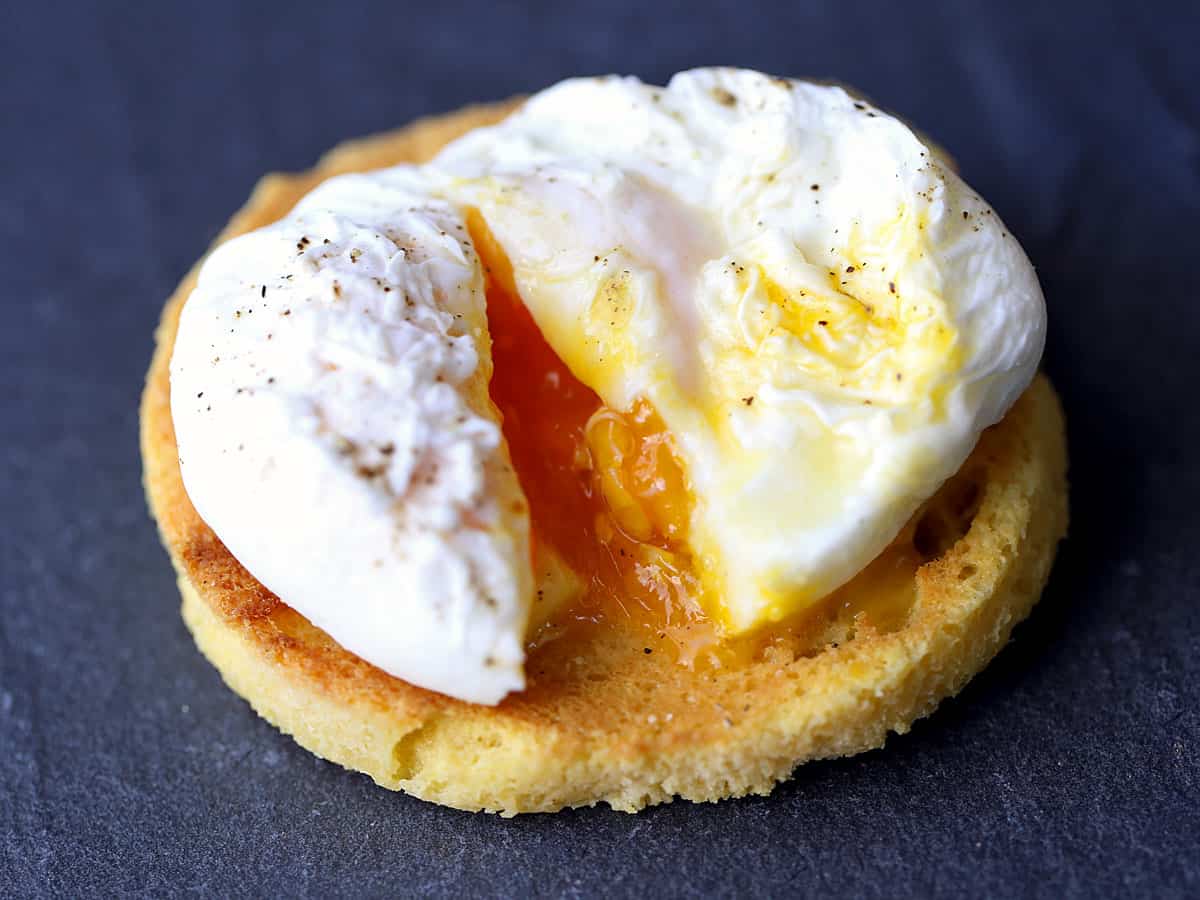
They are also excellent with hollandaise sauce in this keto eggs Benedict recipe. Sometimes, I use them to top sautéed kale or sautéed spinach, turning the vegetable into a complete meal.
In the photo below, I served them with microwave broccoli for an easy meatless lunch.
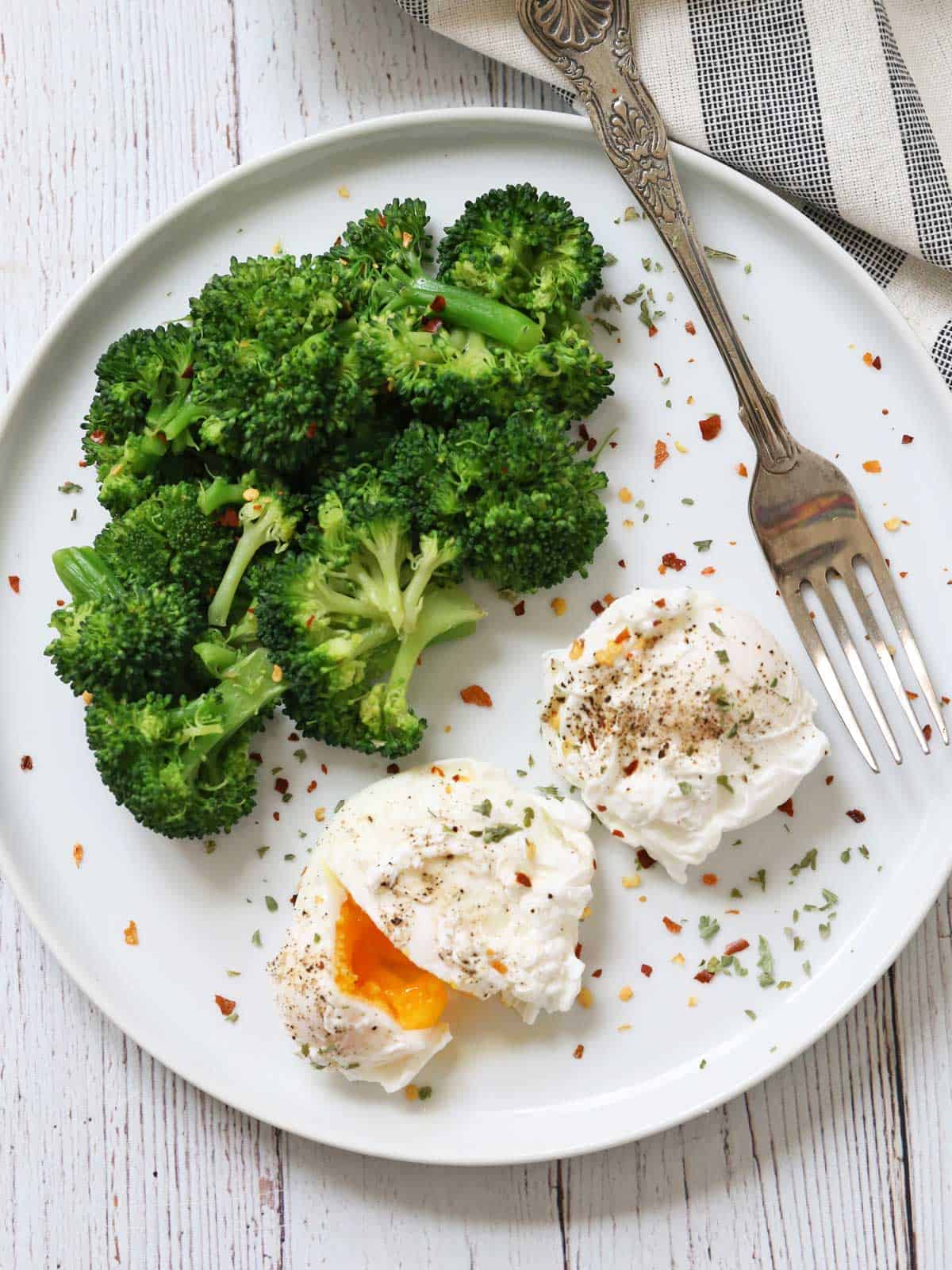
Recipe Card
Easy Poached Eggs
Video
Ingredients
- 1 tablespoon vinegar - for the cooking water
- 1 large egg
- Pinch sea salt
- Pinch black pepper
Instructions
- Fill a small saucepan with water and bring it to a gentle boil. Meanwhile, break the egg into a small bowl. This will make it easier to slide the egg into the hot water while keeping its shape.
- When the water has reached a gentle boil, add the vinegar. The vinegar helps the egg white congeal.
- Use a hand whisk to vigorously whisk the water, then slide the egg into the whirlpool. This will help the egg hold its shape when it first enters the water. If making more than one egg, repeat the process (use a larger saucepan).
- If some of the egg white spreads out and does not curl around the yolk, gently push it in with a spoon.
- Cover the pot, turn the heat off, and set the timer for 5 minutes.
- After 5 minutes, use a slotted spoon to lift the egg out of the water and place it for a few seconds on a paper towel to drain.
- The egg white should be cooked yet creamy, and the yolk should appear soft. When cut open, it should be thick but gooey. Season the egg with salt and pepper, and enjoy!
Notes
- Read the article above the recipe card for my experience using a microwave and a stovetop poacher. Spoiler alert: I'm not a fan. 🙂
- The vinegar helps the egg whites congeal. The faster the egg whites cook, the less risk the whole egg will disperse in the water, leaving you with an unappetizing boiled scramble.
- You add just a small amount of vinegar, so you don't actually taste it. Regardless, using mild-tasting vinegar, such as rice or champagne vinegar, is a good idea. Having said that, I've used plain white vinegar plenty of times, and it was just fine.
- Five minutes should produce runny but jammy and thick yolks. That's exactly how I like them. If you like runnier yolks, keep the eggs in the hot water for just four minutes.
- When you serve the eggs on any type of bread, drain them for a few seconds on a paper towel to prevent soggy bread.
- While you can find tips online for storing and reheating poached eggs, I don't like storing them. I only make as many as my family will eat right away.
- The FDA recommends cooking eggs thoroughly.
Nutrition per Serving
Save this Recipe!
We will also add you to our weekly newsletter. Unsubscribe anytime. See healthyrecipesblogs.com/privacy/ to learn how we use your email.
Disclaimers
Most recipes are low-carb and gluten-free, but some are not. Recommended and linked products are not guaranteed to be gluten-free. Nutrition info is approximate. Please verify it independently. The carb count excludes non-nutritive sweeteners. Please read these Terms of Use before using any of my recipes.


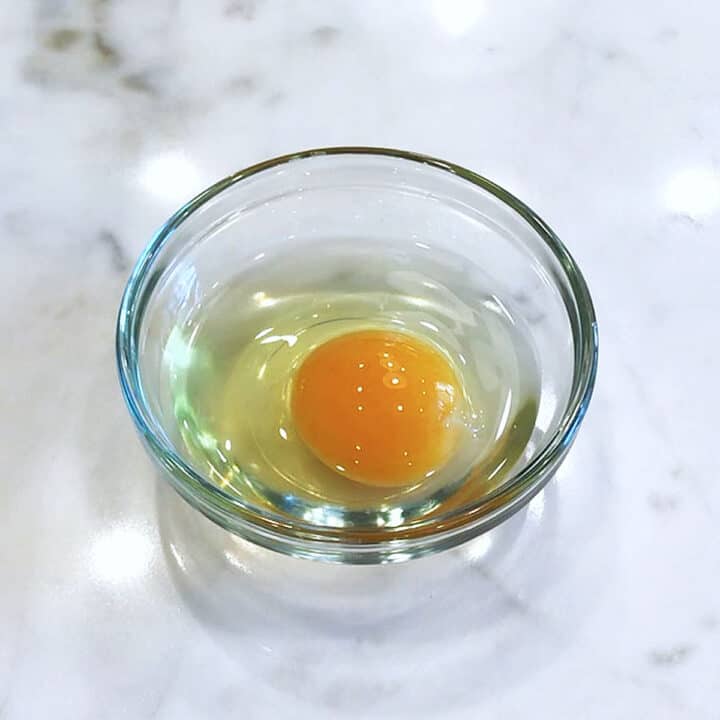
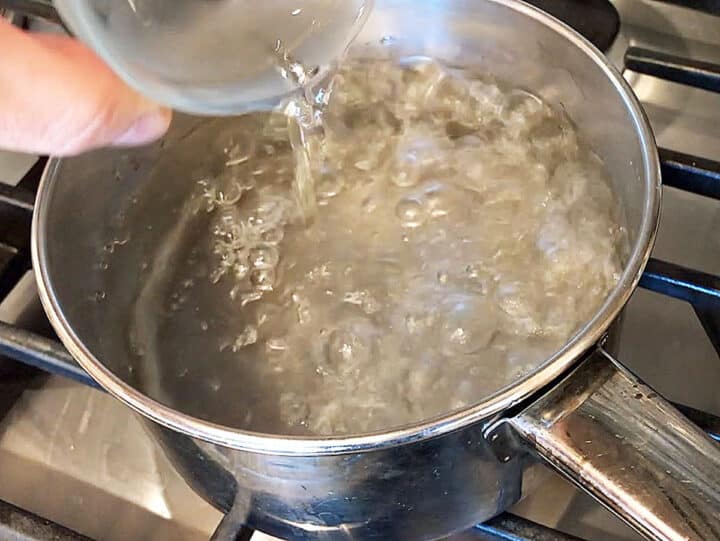
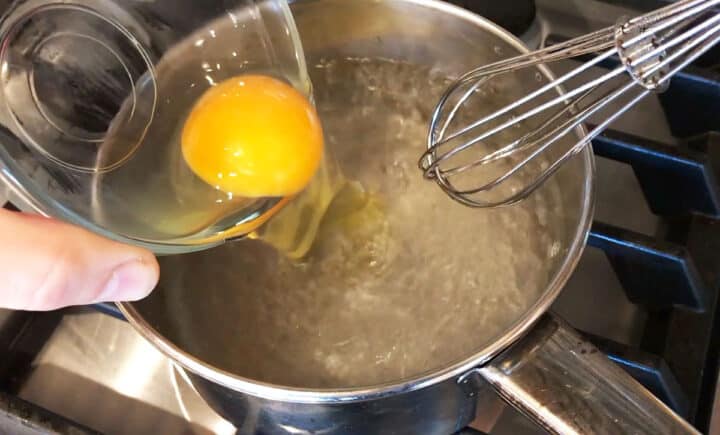
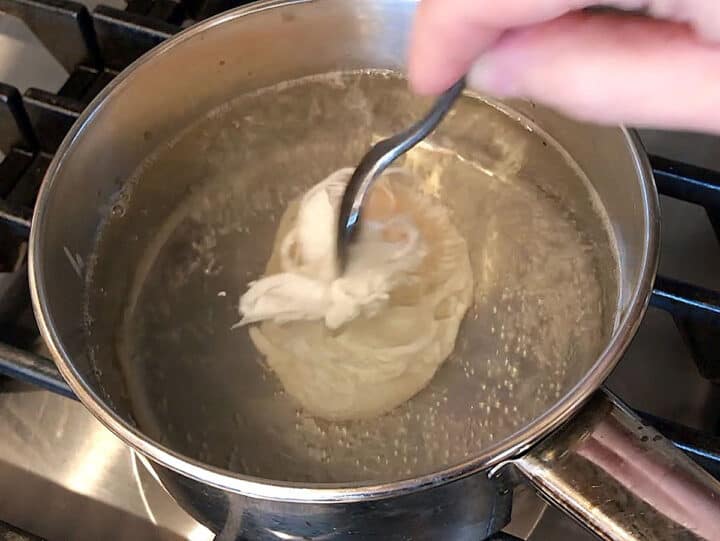
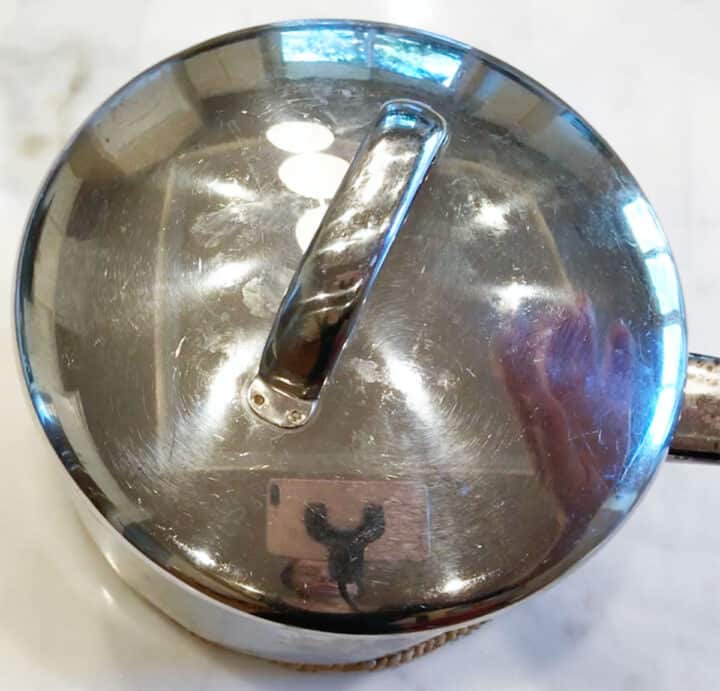
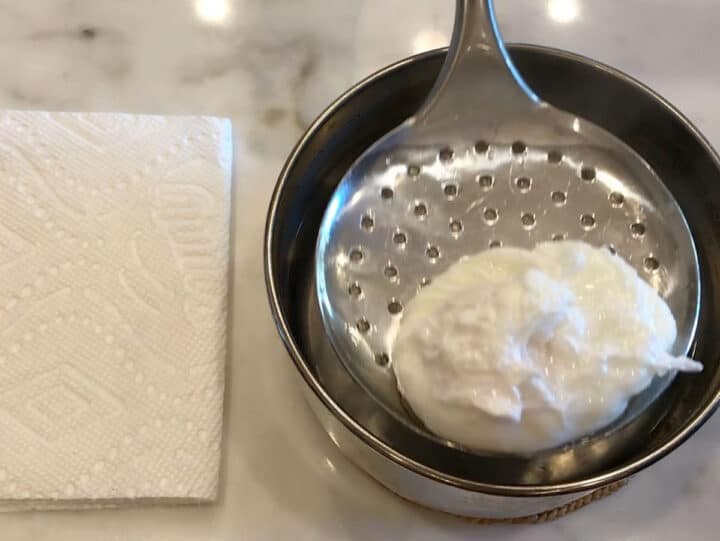
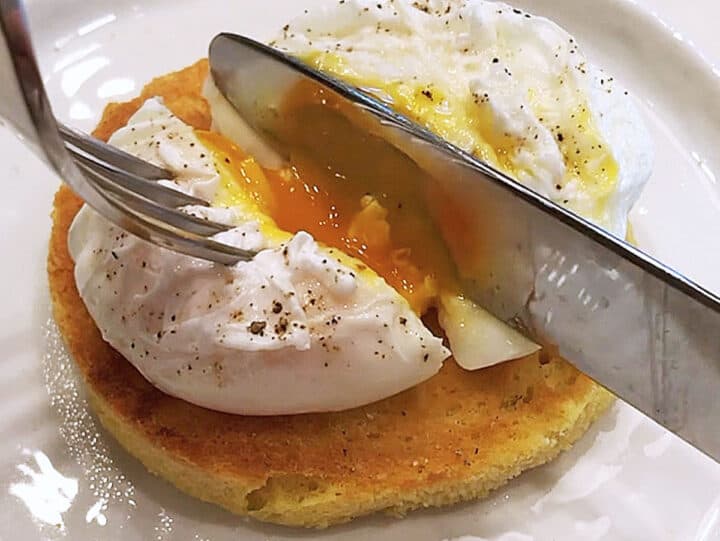



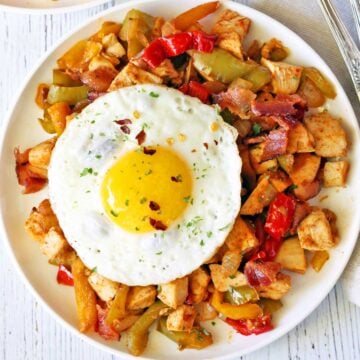
Haley says
For the first time in my life I was able to make proper poached eggs! Thank you so much.
Vered DeLeeuw says
Yay! I'm so glad to hear, Haley. Thanks for the comment!
Beverly says
My first one was unsuccessful. The second was much better because I used an egg ring that I use for muffin sandwiches.
Vered DeLeeuw says
Thanks for the feedback, Beverly! Glad you found a way to make it work.